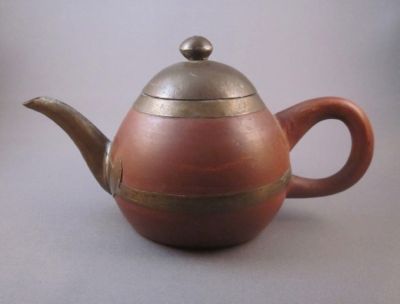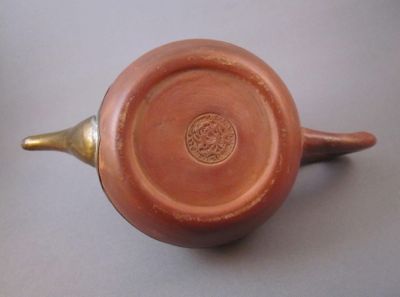I purchased this little teapot thinking it was an example of Chinese Yixing ware with an elaborate early repair. It measures 7-1/2″ from spout to handle and is about 4″ high to top of finial. The shape appears to be typically Yixing but the brass lid, spout and horizontal strap, as well as the unusual incised mark on the underside, made me a bit suspicious. Now I feel the teapot dates from the latter part of the 19th century and was made in China for export to the Middle East, and that the mark on the base is Arabic. The brass spout and lid were most likely a part of the original design to help prolong the life of the teapot and not added to replace broken or missing parts. Learning to know the difference between a piece with an inventive repair and a piece that was designed with metal mounts can be a valuable, though sometimes a costly, lesson. Luckily, I did not pay very much for this “not-a-make-do” teapot.
Tags: brass, Chinese, metal lid, metal spout, pottery, Yixing






“mark on the base is Arabic” – I’m sure you could in times of these find an immigrant who could verify the Arabic? Since the Iraq war and the turmoil in Egypt I have never seen as many Arabic speaking taxi drivers roaming Europe as of late.
I have just bought a teapot that looks just the same except the mark on the base, although similar in design, has marks in the middle that look like Arabic writing. Also, the mark is in relief rather than incised. I can send you images if you are interested. Thankyou for your post.
Jamie
I now believe these teapots with metal mounts were made for or even in Indonesia.
Good to know, as these have been a mystery to me for some time. Thanks Jaap!
Yes it is, made for javanese market that time (indonesia)